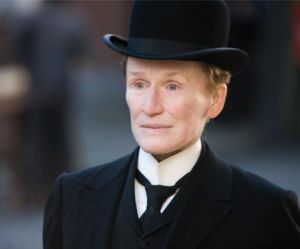Consuming Transgender for Oscar
First, I want to thank Greggor Mattson for this title.
Second, here’s my review for The Danish Girl, a wonderful novel turned into a problematic film.
The Danish Girl
Directed by Tom Hooper
Written by Lucinda Coxon
Starring Eddie Redmayne, Alicia Vikander, and Matthias Schoenaerts
Rated R
From the moment it was announced 15 years ago, the film adaptation of The Danish Girl, David Ebershoff’s acclaimed literary novel about one of the first men to have sex reassignment surgery, was a prestige project, a magnet for Oscars. For 15 years, artists of the caliber of Nicole Kidman, Marion Cotillard, Lasse Halstrom, and Neil Labute circled the film adaptation. Finally, the film was made. Last year’s Best Actor winner Eddie Redmayne was cast as Einar Wegener who would become Lili Elbe. The acclaimed Swedish actress Alicia Vikander is Einar’s wife Gerda. Oscar-winning director of The King’s Speech Tom Hooper would direct. I can imagine the attraction: Redmayne would get to portray the opposite gender in period dress; Vikander could show us her heart break while she remaining tough and determined; Hooper could mix a zeitgeisty social issue with a tragic love story and make it all look beautiful, refined, and important. I always find something a bit distasteful about making profit and reputations off the aestheticized suffering of others, but sometimes the art is powerful, interesting, or inspiring enough that I don’t mind the artists’ prizes. But I minded The Danish Girl.
In the early 1920s in Copenhagen, Einar and Gerda Wegener are young painters; Einar paints landscapes and Gerda does portraits. He is successful and initially, despite seeming to have a greater talent, she is not. One day, Gerda asks Einar to model women’s shoes and stockings when the actual model is late for a sitting; when the model arrives, she deems Einar-in-drag “Lili” and they all giggle. Continuing the joke, Einar brings back Lili, and Gerda paints her, and these paintings finally get art dealers to notice her. But Einar begins to prefer being Lili, and after they move to the more permissive Paris, Einar begins to disappear. As Gerda drifts between mortified and mystified, she befriends Einar’s oldest friend Hans (Matthias Schoenaerts), with whom Einar had a vaguely homoerotic childhood relationship. Einar/Lili attempts to find a cure, meeting with psychiatrists of various levels of sadism, and then meets a doctor who doesn’t want to cure Einar but rather turn him, through what we now call sex reassignment surgery, fully into Lili. But in the late 1920s, such surgery had never been done and no one had yet discovered antibiotics.
Ebershoff’s novel is a postmodern rewrite of the real life of Einar Wegener, whose diaries were a sensation in the Europe in the early 1930s. Ebershoff kept the outline of Einar/Lili’s story, but imagined Einar and Lili’s interior life, and he turned the real Gerda into a fictional Greta, making her a rebellious, iconoclastic American expatriate. But in Hooper’s film, written by Lucinda Coxon, Gerda returns to her Danish roots, though now she’s a proto-feminist. Clearly, a decision was made to tell a more “true” story, which would make the film’s prestige an easier sell. However, the real Gerda was bisexual and this version is heterosexual. The actual surgeries Lili was given are also changed, as is who did them, and perhaps more irritating to me, the circumstances of Lili’s death. While Lili’s transgenderism was groundbreaking, daring, subversive, and famous, the Lili in Hooper’s film is a lonely tragic figure, as if she were a Victorian heroine suffering oh-so-dramatically from consumption.
Hooper’s film is beautifully shot, and both Redmayne and Vikander’s performances are worthy of the Oscar nominations they’ll probably receive. But in turning Lili and Greta’s messy lives into a tear-jerking love story, a cliché of historical drama, and a story of the victimized minority Hooper and Coxon have done a disservice to the zeitgeisty social issue they hope to hijack: They transform Lili and Greta into a consumer product hoping to be emblazoned with a sticker that says “Oscar winner!” In a year that the brave and authentic Tangerine gave us the story of two transgender women surviving the streets of Los Angeles, when Caitlyn Jenner’s politics are more debated than her transition, The Danish Girl feels like it belongs to another era when pity passed for activism.
(Full disclosure: David Ebershoff, who wrote the novel the film is based on, is a friend of mine. The book suffers from none of the film’s problems. I am, of course, biased. But comparing, say, Ebershoff’s controlled, calm, almost sublime ending with Hooper’s maudlin one is really all one needs to see.)

